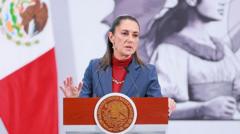Under the harsh lights of an operating theatre in the Indian capital, Delhi, a woman lies motionless as surgeons prepare to remove her gallbladder. She is under general anaesthesia: unconscious, insensate and rendered completely still by a blend of drugs that induce deep sleep, block memory, blunt pain and temporarily paralyse her muscles.
Yet, amid the hum of monitors and the steady rhythm of the surgical team, a gentle stream of flute music plays through the headphones placed over her ears. Even as the drugs silence much of her brain, its auditory pathway remains partly active. When she wakes up, she will regain consciousness more quickly and clearly because she required lower doses of anaesthetic drugs such as propofol and opioid painkillers than patients who heard no music.
This is the finding of a new peer-reviewed study from Delhi's Maulana Azad Medical College and Lok Nayak Hospital, published in the journal Music and Medicine. It presents strong evidence that music during general anaesthesia can modestly reduce drug requirements and enhance recovery.
The study focused on patients undergoing laparoscopic cholecystectomy, a short operation that calls for swift recovery. According to Dr. Farah Husain, a senior specialist in anaesthesia and certified music therapist for the study, the goal is to achieve an early discharge after surgery, which necessitates clear-headed and pain-free awakenings for patients.
To determine whether music could limit the amount of sedatives needed, the research involved 56 adults, randomly assigned to two groups—one that heard music and one that did not. Patients exposed to music required less propofol and fentanyl, experienced smoother recoveries, and showed lower stress hormone levels during surgery.
These findings underline the potential for music as a non-pharmacological intervention in the operating room, enhancing patient well-being and recovery. The study's success suggests that incorporating music into surgical practices could reshape approaches to patient care and create a more humanized environment in operating theatres.















